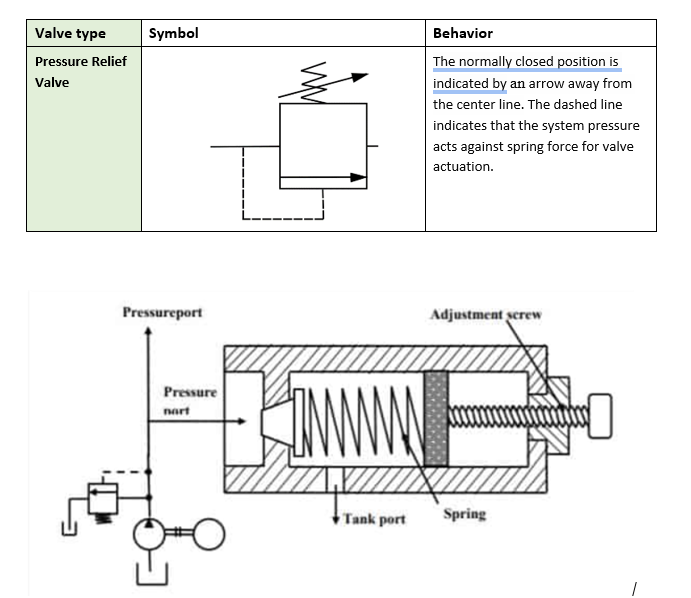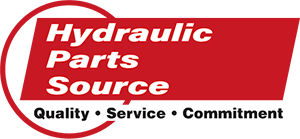Hydraulic Valves, which are used to control hydraulic power by regulating the flow of fluid, are as complex as they are vital to a hydraulic system.
As control managers of the system’s flow, valves are capable of redirecting pressurized fluid, controlling flow to specific areas, or completely closing a line.
Valves have the ability to manipulate flow, the direction of flow, and perhaps most importantly, the amount of pressure coursing through a hydraulic system.
Hydraulic pressure relief valves not only limit the maximum pressure within a hydraulic circuit; they also create a new path for flow when that pressure exceeds a limit.
Let’s examine further how pressure relief valves operate to dispense built-up pressure, what can happen when they fail, and how to problem-solve any common issues.
What Do Pressure Relief Valves Do?
Pressure Relief Valves limit maximum pressure in a hydraulic circuit by opening an alternate path that relieves pressure that exceeds a preset level.
All fixed-volume circuits require a pressure relief valve to avoid excess pressure that can cause system failure. They can be direct-acting or pilot-operated to perform this function.
Pressure relief valves are the most widely used type of pressure control valve in nearly every hydraulic system.
How they work is pretty simple:
- The relief valve opens when fluid pressure exceeds the set limit
- Excess pressure is relieved
- When the pressure falls, the valve closes
For more understanding, let’s examine how pressure relief valves appear on a schematic and in a simple circuit.

credit: learnmech.com/pressure-relief-valve-diagram-working/
In this example, a poppet is held inside the valve by a heavy spring. The poppet is forced off its seat when the pressure exceeds a set value, and flow is released through an outlet into a tank.
Why Are Hydraulic Relief Valves Important?
A pressure relief valve has the critical task of protecting a system from any overloads of actuators that can compromise the system.
When a pump unloads or actuators are in motion, fluid movement is not a problem. A relief valve is essential when the actuators stall or to balance hydraulic force with spring force, opening in response to pressure and releasing heat.
Without a pressure relief valve, when pump flow is stalled or stopped, the system would sustain damage, power wastage, overheating, or even failure due to excess pressure.
Sticking, Leaking, and Common Pressure Issues
Relief valves can last up to 30 years when maintained properly. However, problems can arise that may need some troubleshooting.
In the meantime, look for signs of common pressure issues, such as sticking or leakage, that can lead to pressure relief valve failure.
If the system is not reaching the designed pressure or is exceeding the maximum pressure, it can be a sign of valve issues. Checking the relief valve for common problems can determine the problem.
Here are some reasons these common issues may occur:
- Wrong calibration – the relief valve is calibrated to the wrong pressure
- Not closing fully – the valve can be worn or damaged after years of service, or debris may be preventing closure
- Sticking – Contaminants like dirt, dust, and corrosion can cause the valve to remain stuck in the closed position
- Leakage – If the valve is not the proper size, is not closing, or is damaged from debris or extreme temperatures, leakage can occur
Wear and corrosion, excess debris, and leakage may lead to pressure relief valve replacement.
However, to avoid these issues, calibrate and install pressure relief valves properly and plan on performing routine checks and adjustments.
Here are 6 steps to use while setting, checking, and adjusting a hydraulic relief valve:
- Consult schematics and locate the relief valve, taking note of which circuit may need adjusting
- Locate and remove the hydraulic hose on the system side of the relief valve
- Connect a pressure gauge between the valve and pump (use an adapter if there is not a port installed)
- Loosen the pressure relief valve as far as it will go until the pressure reading is as close to zero as it can get
- Adjust the relief valve
• Turn the adjuster clockwise until the gauge pressure matches the schematic to “crack” pressure (the pressure at which the relief valve opens)
• Tighten the adjuster lock nut securely - Shut down machinery and remove JIC plugs and caps, reconnecting any hoses removed in step 2, then start machinery and test the relief valve by starting the circuit and checking that pressure matches the set pressure from step 5
Knowing More About Pressure Relief Valves
With their ability to relieve the pressure coursing through the system, hydraulic pressure relief valves are vital preventative instruments that function to make sure damage is not done if pumps and actuators are halted.Without a pressure relief valve present, the system can sustain damage, power wastage, overheating, or even failure due to excess pressure.
As they are the most used in hydraulic systems among all control valves, knowing this additional information about relief valves is worth knowing.
Hydraulic Parts Source is a leading fluid power remanufacturer, and we’re ready to serve you. Contact us today to experience OE quality for a fraction of the time and cost by calling (866) 826-4122 or get a quote by emailing sales@hydparts.com.

